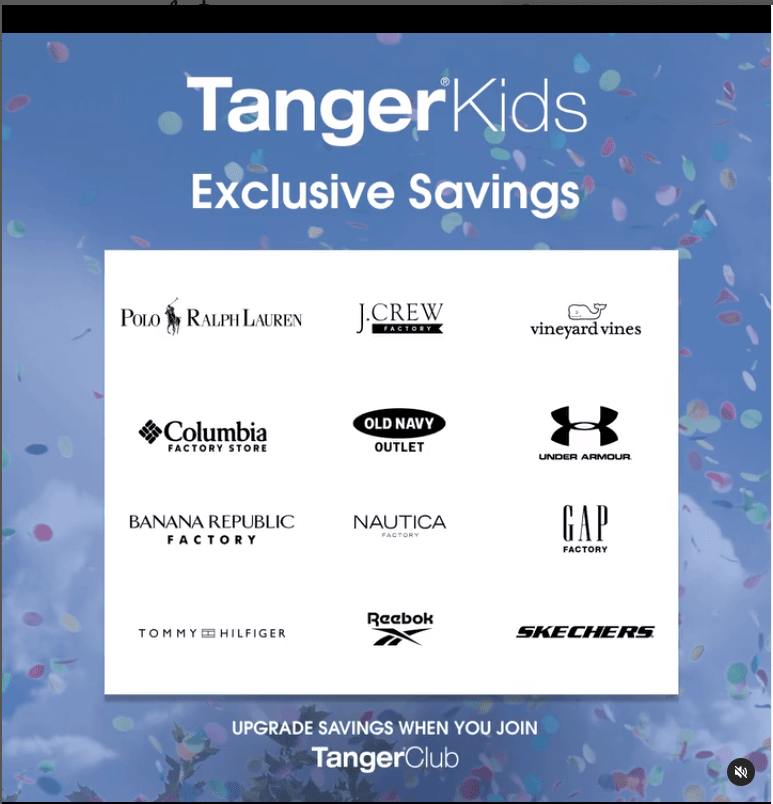How to Use Geographic Segmentation to Reel in Pro$pect$ 🎣
Marketing segmentation is a powerful marketing tool, and one of the most important segmentaiton variables is geographic segmentation.
Geographic segmentation allows you to purchase dry pork and seaweed donuts in China at Dunkin® Donuts. 🍩
Really.

This brilliant digital marketing strategy meets your prospects where they live — physically and culturally.
In this post, we call attention to the subtle nuances of geographic segmentation and give you the tools and examples to implement it successfully.
Ready to dive in?
What is geographic segmentation?
Geographic segmentation targets your audience based on the location they live, work, or play in — giving you factual geographic data.
Data from geographic factors and demographic segmentation is fact-based; it’s considered an objective form of marketing.
One that’s much simpler to comprehend versus the subjective nature of psychographic segmentation, which gathers customer data on thoughts, attitudes, and beliefs.
Its close cousin, behavioral segmentation, observes consumers' actions and then distills what they mean.
And firmographic segmentation focuses on companies (size, location, revenue, etc.) rather than potential customers.
You may be thinking, well, it’s clear that location matters and aren’t we already taking that into account when we have a product to sell?
Well, yes, and no. When left out of the marketing mix, nuances to this approach can profoundly affect your bottom line and customer base.
So what kind of businesses benefit from this approach?
You’ll tend to find smaller businesses utilizing geographic market segmentation because it aligns with having a smaller budget.
A neighborhood target marketing effort marries well with a company just starting.
As businesses grow in product offerings and expand their reach, this strategy will shift because they now have the budget to support a wider audience segment.
And it will no longer be cost-effective to target one specific area.
Benefits of geographic segmentation

Let’s dive into some benefits that may not be so apparent.
1. Meeting your audience where they live
Communicating with your target audience as if you were the neighbor next door gives you the unique position of knowing their specific needs and desires. In addition, it gains your shopper’s trust.
2. Save time and increase profits
This market segmentation strategy represents the low fruit hanging on a tree.
It’s easy to grasp and is one of the more straightforward marketing tools to start with — giving you an easier win that translates into higher profits.
3. Cultivating meaningful relationships
You build stronger connections with your audience by targeting your prospects with relevant product messaging based on geography.
And they don’t have to figure out what they need because you’ve already delivered a customer experience or product that tells them you have their back.
4. An affordable marketing strategy
Geographical segmentation is a sure-fire marketing strategy that any new business can develop to quickly gain customer loyalty and profits.
And again, it's the small business owners that stand locally to achieve the most from this focus.
And there will be times when this strategy falls flat when you are a business selling universal products and stand to gain more from a broader audience.
For example, selling staple goods like corn, wheat, or rice encompasses a much wider audience transcending borders.
Geographic segmentation variables
Let’s dissect the six different variables that make up geographic segmentation.
Location

Yes, this may be the most apparent variable, but it’s important to mention.
Location refers to the city, state, country, region, neighborhood, and postal code your target audience belongs to.
In addition, location is how consumers are categorized by Google when searching for businesses to fit a specific need.
And you’ll see this in social media settings as well.
Having your business listed as a local seller of products and services allows you to gain organic search traffic based on location.
And having a firm grip on preferences by locational neighborhoods is also essential.
For example, Chicago residents on the north side prefer the Cubs, and the south side favors the White Sox.
Small and large businesses benefit from this knowledge and can use it to target their audience meaningfully.
Climate

When is a climate consideration appropriate for your product or service?
Well, are you selling winter coats to residents in Florida?
Probably not!
But, Florida residents looking to go back north for the holidays may require that winter coat — satisfying a seasonal need.
Retailers like Target and Walmart look to target their audiences more seasonally, accounting for the vast majority of climates by the time of year.
How and when you consider climate and its impact on your audience will sharpen your market segment messaging so that you don’t miss an opportunity.
Culture

Knowing your potential customer's culture includes awareness of their religion, traditions, and social mores.
Adjusting for cultural preferences in your marketing messaging will be a crucial component of your campaign.
For example, fast food companies can adjust their offerings in different regions to accommodate the locals.
McDonald's offers beer along with their burgers in Germany but leaves it out in the states. 🍺
Population

Marketing to specific areas within an area is just as impactful.
The population density of a city is very different from a rural setting. Factor in suburbs, and you have many nuances to consider.
Marketers may find it more advantageous to market to densely populated areas versus their rural neighbors.
And distribution costs of products are less in densely populated areas.
However, a specialized Mom and Pop grocery store may do better in a rural setting than competing with significant chains in a heavily populated area.
You’ll have to gauge what works best for your prospective customers.
Urban, Suburban, Rural

A subset of the population variable, urban, suburban, and rural, are factors you’ll want to understand as you shape your product offerings and segment your audience.
These three specific markets can have distinct yet subtly different needs that a savvy business owner can meet.
Let’s take a look at a lawn mower business.
- Urban area customers most likely don’t have yards, so marketing to this group is a moot point
- Suburban consumers do have lawns and could benefit from push or propelled lawn mowers to tend to their lawns
- Rural customers typically live on more significant properties and require ride-on mowers or lawn tractors to tackle the immense amount of landscape to mow.
Matching your buyer with the right product based on this variable can be crucial based on the product your offer.
Language

Positioning the right languaging on your labels and messaging is consequential if you don’t do it right.
While English is the dominant language spoken in the world, it may not work for someone in their home country that is bilingual and considers English a second language. It could seem off-putting.
Knowing your audience’s language preference and the jargon or slang they may use can keep you from offending your potential buyers and build the rapport necessary to make a sale.
How to compile geographic segmentation data
Next, let’s dive into making geographic segmentation work for you.
1. Surveys
Surveys are a great way to gather data straight from the consumer.
Survey types include interviews, focus groups, panel sampling, and online surveys.
And don’t forget to survey your customer service teams because they are directly on the frontlines, interfacing with the public’s needs and desires — providing an insider view to your consumer.
2. Sales Data
Consult with your internal sales database to organize consumer purchases and customer behavior analysis by region.
Then, match this data with your survey feedback to get a more in-depth picture of customer segmentation and preferences.
From here, you can create different groups to target your market messaging.
3. Website Data
Your web traffic data can reveal where your audience segmentation resides when making purchases, allowing you to gauge regional behavior.

4. Mobile Data
App-based location technology allows you to hone in on a prospect's geographic location.
The sophistication of mobile data gathering has made it easy to understand your potential market.
5. Social Media Data
The traffic data you can pull from social media is another meaningful way to gather specific geographic locations and incorporate them into your digital marketing mix.
6. Third-Party Sources
Third-party sources like agencies designed to help businesses execute geographic segmentation can take the guesswork out of collecting data yourself.
And places like Google Analytics, Twitter, and Facebook allow you to pull concentrated data from a specific area.
Examples of geographic segmentation
Now let’s turn our attention to real-world geographic segmentation examples in action that may just inspire your next target marketing campaign.
Location

Waffle House is a restaurant chain you’ll find in the South.
They cater to southern home-style cooking and don’t skimp on fat, salt, or grease to get you a fast meal.
All Waffle Houses are open 24/7 and operate 365 days a year.
Climate

Arctic Cat, a producer of all-terrain vehicles and snowmobiles, relies on a climate-based market segmentation strategy.
Arctic Cat has been around since 1960 and operates out of Thief Rivers, Minnesota.
Their success comes from matching their products by region.
You won’t find dealerships offering snowmobiles in Florida, and you won’t find all-terrain vehicles in urban and heavily populated settings where space is non-existent.
Their target market includes North America for snowmobiles and foreign locations, encompassing Finland and Norway.
Culture
In a 2018 award-winning ad called “The Talk,” Proctor & Gamble targeted the culture and story of Black Americans having the talk about racism with their children.
Promoting beyond their cleaning supplies and toiletries — they sought to reach black mothers by addressing a culturally relevant topic in America and beyond.
Population

LifeLine Repairs is a franchise that services broken smartphones, laptops, and computers.
LifeLine approaches neighborhood communities based on the wants and desires of its residents.
For example, they discovered that people living in Boise, Idaho loved biking. So they positioned eight free bikes in front of their store to borrow, ride, and return when they were ready.
Thus creating a perk for customers and ultimately building brand loyalty.
Urban, suburban, rural

High-end retail stores in urban and suburban areas charge more and offer lower prices at rural outlet stores farther away from the big city centers to appeal to more hometown customer segments.
TangerOutlet stores groups name-brand stores in outlet centers located in rural areas.
You can find them scattered throughout the states, from Arizona to Vermont.
Language
Spotify, an online music and podcast streaming platform, brilliantly caters to a multi-cultural community.
Originating in Sweden, Spotify has seen enormous success in the US and beyond because of its browse features.
Being able to browse for categories like sleep, meditation, or workout, in addition to searches for hip hop and rock, Spotify has been able to speak to a broader audience by finding the language we all have in common.
Catering to universal needs helps open the market for international artists seeking more visibility abroad.
Geographic segmentation is a vital marketing tool
Geographic segmentation is a target market research tool that’s not wise to overlook.
And understanding the nuances of this segment marketing strategy offer some clear benefits to large and small businesses if implemented correctly.
So grab a coffee from your local barista and soak up the local vibes to get a sense of where your future geo segmentation can take you!
A certified content marketer with Smart Blogger, Kris Freeman, knows how to please the ‘Google Gods’ so that your content gets noticed, is cool to read, and starts to rank in Google. As a business owner, Kris has seen firsthand how mediocre businesses become unstoppable pursuits when Google starts to consider you relevant. You can find more of Kris's work at kriscfreeman.com or at her personal blog.